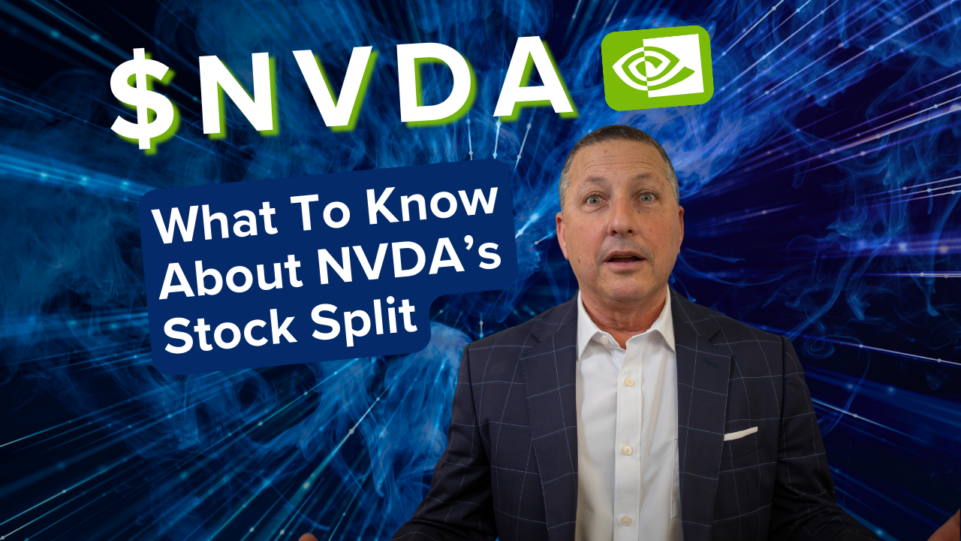
On May 22, chipmaker company Nvidia Corp (NVDA) announced a massive 10-for-1 stock split, sending shockwaves through the trading space. The split went into effect after market hours on June 7, which is expected to have drastic implications on how Nvidia is perceived and traded.
The news is causing traders to ask a lot of questions – from why Nvidia made this decision, to how their holdings in it will be affected. We’ll address these inquiries by explaining what a stock split is and how it works, the specific effects it’s going to have on Nvidia shares, and some ways traders might consider playing it in the near term.
What is a Stock Split?
In layman’s terms, stock splits happen when a company increases its total number of shares to boost their stock’s liquidity. This usually happens by fractionally reducing the price, and proportionately multiplying the number of shares. Despite these drastic fluctuations, the monetary worth of shares someone owns remains unchanged, since a split doesn’t alter the company’s value.
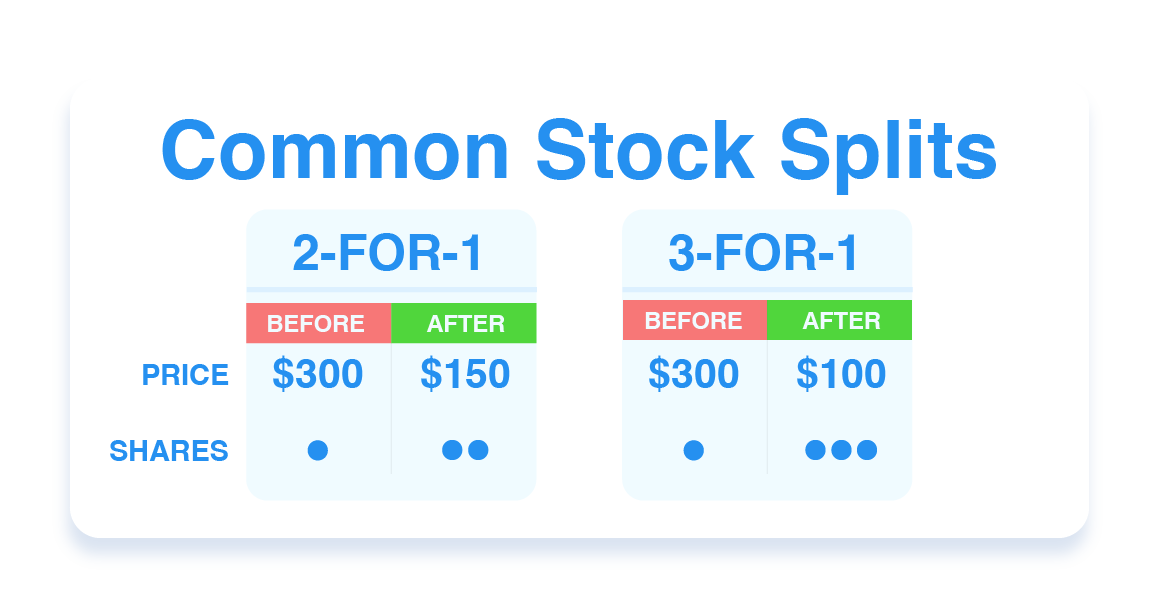
Some of the most common stock split ratios are usually two-for-one, or three-for-one. This means the stock price will respectively be reduced by half (two-for-1) or one third (three-for-one) of its pre-split value. For every share someone holds before a stock split, their total number would increase by 2X (two-for-one) or 3X (three-for-one).
For example, let’s say a stock valued at $100 undergoes a two-for-1 stock split. This means the stock price will go from $100 to $50. If you owned 100 shares of that stock, the total number you’re holding would increase from 100 to 200.
It’s the same case for options traders, but with different moving parts. Traders who hold contracts in a stock pre split will see the strike price reduced, but their number of contracts multiply proportionately.
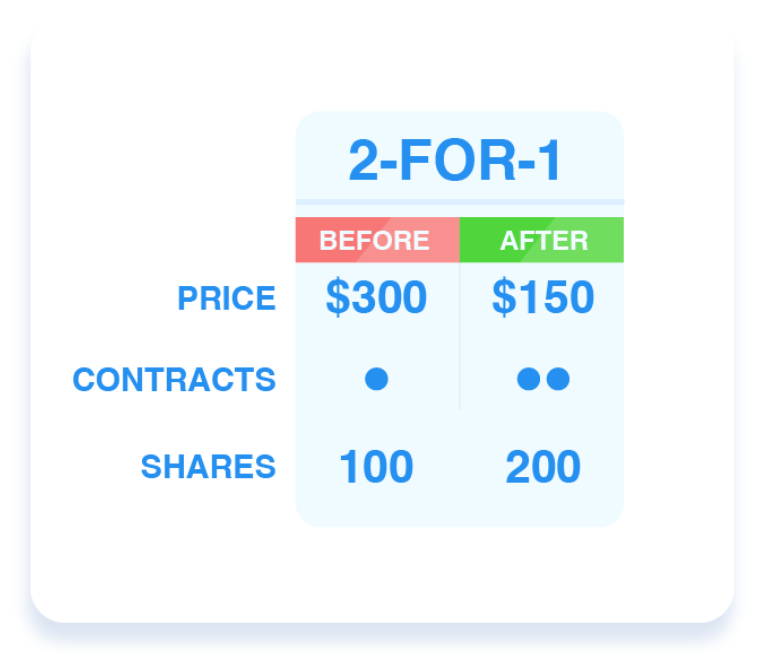
Sticking with our two-for-one example, let’s say a trader owns one option contract (100 shares) with a $300 strike price. If the underlying stock undergoes a two-for-one split, their contract’s strike price will go from $300 to $150. The number of option contracts they’re holding will double (from one to two) – increasing their total shares from 100 to 200.
What Nvidia Stock Split Means for Traders
As we previously mentioned, shareholders in Nvidia won’t experience any drastic changes in the dollar value of their holdings. They will, however, see an exponential increase in how many shares they own.
The biggest way Nvidia’s stock split will affect traders is how it’s expected to be perceived. The drastically reduced price will likely make Nvidia more appealing to a broader range of traders, creating more flexible conditions for buying and selling shares or option contracts. The cheaper price will make it more affordable to trade in much higher quantities, which could potentially cause a huge spike in volume (at least in the near term).
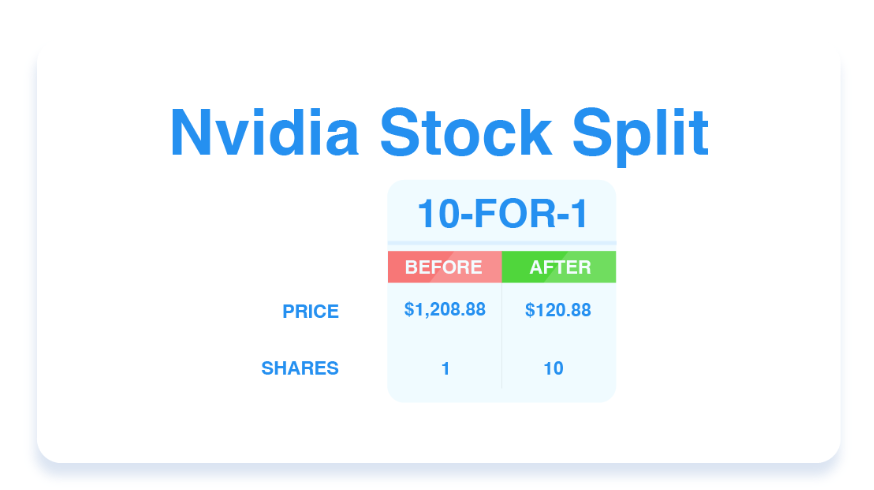
For those who already have holdings in Nvidia, the 10-for-1 split means its stock price will be reduced to 1/10 of its dollar value, and their total number of shares multiplied by 10. Since Nvidia was trading at $1,208.88 when the market closed on Friday, its price will change to $120.88 Despite the substantial stock price cut, someone who owns 10 shares of Nvidia will see their holdings increase to 100.
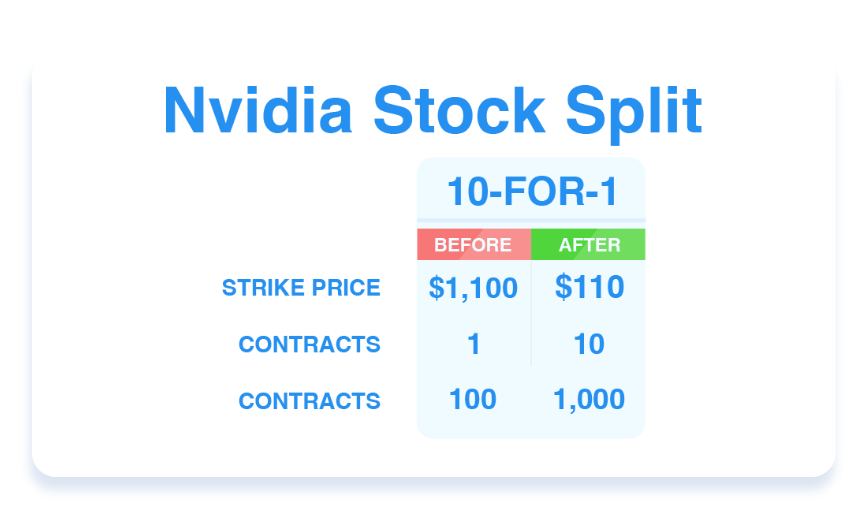
Using this same scenario for options traders, if someone held Nvidia contracts with a $1,100 strike price before Friday afternoon, it’ll get adjusted to $110 post split. If they have one contract (100 shares), they’ll now be in control of 10 contracts whose total number of shares will increase to 1,000.
If you’re new or need a refresher on options trading, check out my Options Trading For Beginners Cheat Sheet, which explains some pretty cool strategies you can consider using to trade Nvidia. Click here to get a free copy of my Options Cheat Sheet.
Expected Market Behavior and Volatility
For the most part, stock splits have a history of causing huge fluctuations in implied volatility (for said stock). This is typically a result of traders reacting to the stock’s cheaper price, increased liquidity, and aggressively speculating what direction it winds up moving post split. Once that initial hype dies down, prices typically normalize or decrease as the stock begins trading within this adjusted range more regularly.
Nvidia, however, might see a different outcome. The stock has been coveted and closely watched by traders, whose price multiplied over 10X since October 2022. Due to Nvidia’s uniquely high increase in shares, there’s a good chance the stock split could cause tighter market spreads and more incremental price movements.
Strategic Trading in Nvidia Post Stock Split
The post-split environment for Nvidia could offer a unique opportunity for options traders. In the near term, traders might look into utilizing strategies that help them take potential advantage of any subsequent increases in volatility like long straddles and strangles, along with buying butterfly and calendar spreads.
Once prices normalize, options traders could shift gears, and start employing tactics to potentially capitalize on the anticipated decreased volatility – ie, short vega positions. These might include short straddles and strangles, iron condor and butterfly spreads, along with selling naked options (depending on your risk tolerance) and employing credit spreads.
I mention using some of these options trading strategies in my Weekly Watchlist, which features three stocks that are on my radar at the beginning of each trading week. If you’re interested in finding out what stocks I’m looking at, click here to start getting my free Weekly Watchlist.
Conclusion
Nvidia’s 10-for-1 stock split marks a rare and significant event for traders. By dramatically reducing the share price and increasing its quantity of shares, Nvidia aims to boost liquidity and broaden its appeal among a wider range of market participants.
For traders with current holdings, Nvidia’s stock split will exponentially increase their total number of shares, without affecting the monetary value. Options traders will see strike prices adjusted, and the number of contracts they hold multiplied. Any strategies traders resort to using will likely be contingent on the degree of volatility Nvidia initially experiences, and how much prices eventually stabilize once that initial wave of excitement subsides.
If you’re currently holding or considering trading Nvidia post split, it’s always important to do your own research. Keep tabs on any pertinent news developments, and technical analyses for Nvidia stock, familiarize yourself with any potential trading strategies, and most importantly – make sure any trading decisions align with your risk tolerance.





